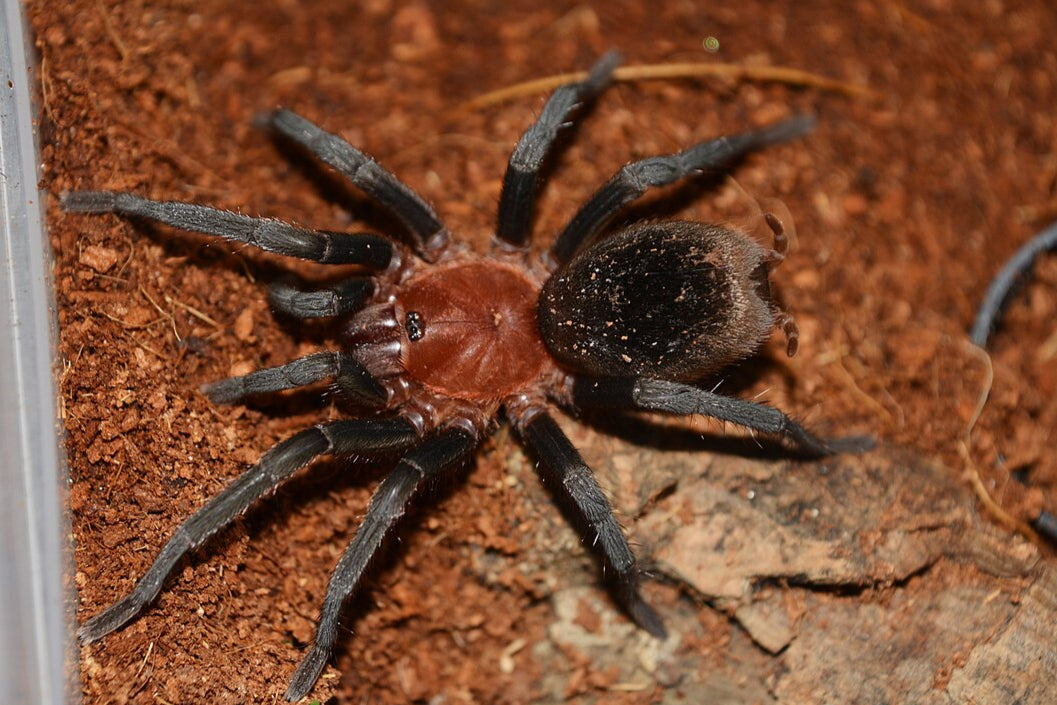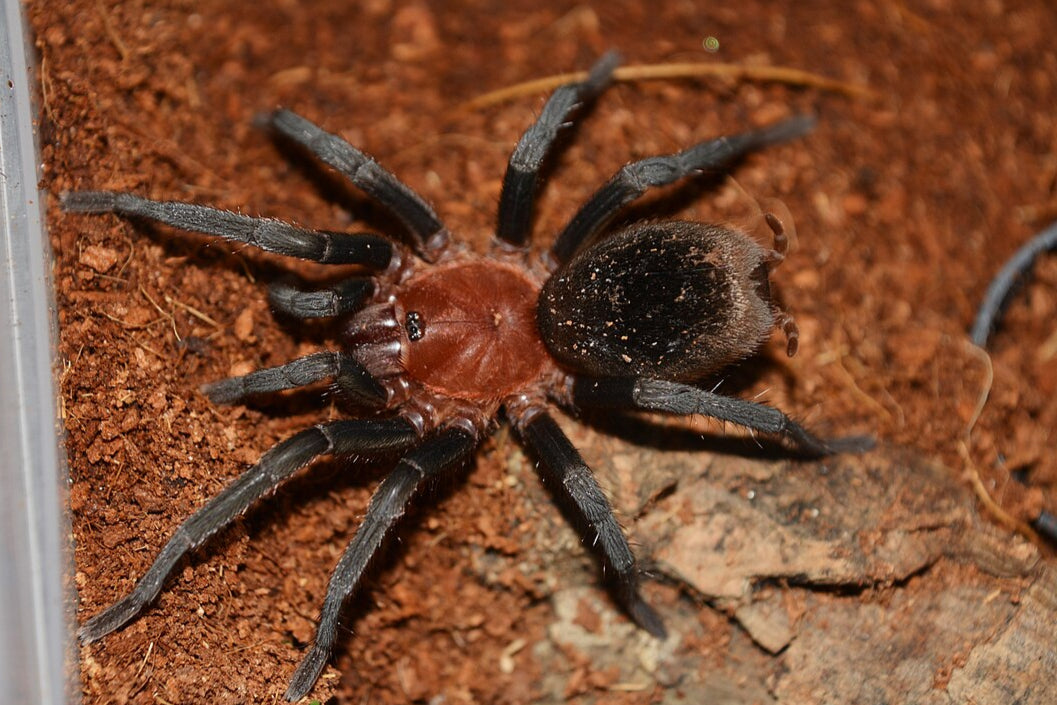Tarantuladen.co.za
Brazilian Red Head (Bumba horrida)
Brazilian Red Head (Bumba horrida)
Low stock: 5 left
Couldn't load pickup availability
Compact, bold, and underrated, Bumba horrida is a terrestrial New World tarantula from Brazil that stands out thanks to its distinctive red-orange carapace and chill personality. A perfect blend of manageable size, hardy temperament, and unique looks — ideal for collectors who want something “off the beaten path.”
Quick Facts
Common Name: Brazilian Red Head
Scientific Name: Bumba horrida
Origin: Brazil
Size: 3.5–4.5 inches (9–11 cm) leg span
Lifespan:
- Females: 10–12+ years
- Males: ~3–4 years
Temperament: Calm to slightly skittish, rarely defensive
Coloration
Fiery reddish-orange carapace — like a glowing ember
Velvety dark legs and abdomen, sometimes with a faint bluish shimmer
Subtle striping near the knees
Small size, big contrast — really pops in natural light
Housing & Care
Enclosure Type: Terrestrial — moderate floor space, good depth for digging
Substrate: 3–4 inches of moist-but-not-wet substrate
Humidity: 65–75%
Temperature: 72–78°F (22–26°C)
Decor:
- Cork bark or small hide
- Water dish
- Some light leaf litter or moss for aesthetics
Will burrow if given the depth — not necessary, but appreciated.
Feeding
Diet: Crickets, roaches, mealworms
Feeding Schedule:
- Slings: 2–3x/week
- Juveniles: Weekly
- Adults: Every 10–14 days
Reliable feeder — not aggressive but usually takes prey quickly
Why It’s Worth a Spot in Any Collection
That red head — unique coloration not seen in many other species
Smaller size = great for compact enclosures
Hardy and low-maintenance
Not aggressive, relatively easy to work with
Rare in the hobby — definitely not your average display spider
Notes
Can be shy, but will often sit out if undisturbed
May kick hairs when stressed, though generally mild
Doesn’t like overly dry conditions — keep humidity steady
A bit slower growing than some species, but worth the wait
Share


